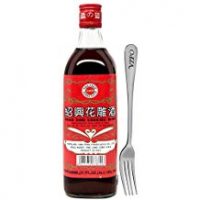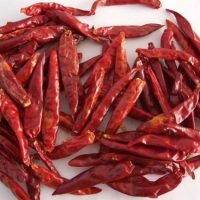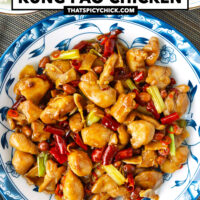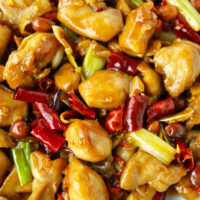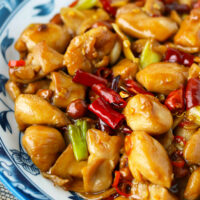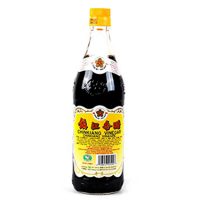 Buy Now →
Buy Now → Authentic Kung Pao Chicken
Kung Pao Chicken is a popular Sichuan chicken stir-fry that’s quick and easy to make on any given weeknight and full of irresistible savory, spicy, numbing flavors with a hint of tang and crunchy peanuts. Make it at home the authentic Chengdu-style way!
- Prep Time: 10
- Cook Time: 15
- Total Time: 25 minutes
- Yield: 4 1x
- Category: Dinner
- Method: Stir-fry
- Cuisine: Sichuan
Ingredients
Scale
For the Chicken Marinade:
- 370 grams – 385 grams / 13 – 13.5 ounces Chicken Thighs (or Breasts), boneless, skinless – cleaned and pat-dried, cut into ¾-inch cubes
- 1 TBLS Low Sodium Light Soy Sauce
- 2 TSP Shao Xing Rice Wine
- ¼ + 1/8 TSP Kosher Salt (see notes*)
- 1.5 TSP Potato Starch (or Corn Starch)
- ½ TSP Sesame Oil
For the Sauce:
- 1 TSP Potato Starch (or Corn Starch)
- 1 TBLS White Sugar
- ¼ TSP Kosher Salt
- 2 TBLS Low Sodium Light Soy Sauce
- 2 TBLS Shao Xing Rice Wine
- 1 TBLS Chinkiang Vinegar
- ½ TSP Dark Soy Sauce
- 1 TSP Sesame Oil
- ¼ cup / 60ml Water
For the Kung Pao Chicken Stir-fry:
- 4 TBLS Peanut Oil (or any neutral flavored oil with a high smoke point)
- 1 TSP Pure Chili Oil (optional – without seeds/flakes)
- 1 TSP Sichuan Red Peppercorns – red husks only, black seeds and stems discarded
- 10–20 Chinese Dried Red Chilies (I used Qiubei dried red chilies – see notes*), to taste – stems removed, snipped into ½-inch pieces
- 6 Garlic cloves – thinly sliced
- 1.5-inch piece of Ginger – thinly sliced (about 2 tablespoons sliced)
- 5 Spring Onion (white and light green parts only – see notes*) – cut into ¾-inch pieces
- 1–3 fresh Red Chilies (optional – I used Thai Bird’s Eye chilies, but any small hot red chilies will work), to taste
- ¼ cup unsalted Fried Red-Skin Peanuts (or unsalted dry roasted peanuts – see notes*)
Instructions
Prep:
- Marinate the chicken: Clean and pat-dry the chicken thighs. Trim off excess fat if needed, then cut into ¾-inch cubes. In a medium bowl, combine the chicken, low sodium light soy sauce, Shao Xing rice wine, kosher salt, potato starch, and sesame oil. Mix until combined well, then set aside to marinate for at least 15 minutes.
- Make the sauce: Whisk together the potato starch, white sugar, low sodium light soy sauce, Shao Xing rice wine, Chinkiang vinegar, dark soy sauce, sesame oil, and ¼ cup water in a small measuring cup (or bowl) until combined well.
- Prepare the fresh/dry ingredients: Slice/cut the garlic, ginger, spring onion white and light green parts, fresh red chilies (if using), and dried Chinese red chilies as indicated in the ingredients section, then set aside.
For the Kung Pao Chicken Stir-fry:
- Cook the chicken: Heat 2 tablespoons peanut oil in a large wok over high heat. Once hot, add the marinated chicken and immediately spread the pieces out in the wok. Cook, undisturbed for 40 seconds, then stir-fry for 1 minute or until no longer pink and the chicken is 80% cooked through. Transfer to a fine mesh strainer and hold it above the wok to let the excess oil drip into the wok. Tip the chicken pieces into a clean bowl and set aside. Wipe out the wok with paper towels.
- Stir-fry aromatics: Heat the remainder 2 tablespoons peanut oil and 1 teaspoon chili oil (if using) over high heat. Once hot, add the garlic, ginger, and spring onion white and light green parts. Stir-fry for 30 seconds until fragrant.
- Stir-fry chilies and Sichuan red peppercorns: Add the fresh red chilies, dried red chilies, and Sichuan red peppercorns. Stir-fry for 15 seconds to combine, taking care to not let the dried red chilies burn.
- Add the chicken and sauce: Give the sauce a quick stir with a spoon (the potato starch will have settled at the bottom) to loosen it up. Add the chicken back into the wok and pour the sauce on top of everything. Toss for a minute until everything is evenly coated in the sauce. If the sauce starts to get too thick, add a tablespoon of water and continue tossing to combine.
- Toss through peanuts: Add the fried peanuts and toss briefly to combine, then switch off the heat.
- To Serve: Transfer to a serving plate/dish and serve immediately with warm steamed rice.
Notes
- Asian pantry sauces. Shao Xing rice wine (Chinese cooking wine), Chinkiang vinegar (Chinese black vinegar), and dark soy sauce (thicker than light soy sauce and used for color mainly) can all be found in an Asian supermarket, some mainstream supermarkets that is well-stocked with international ingredients, and online. Substitute dry sherry for Shao Xing rice wine, half white and half balsamic vinegar for Chinkiang vinegar, and low sodium light soy sauce for dark soy sauce if unavailable.
- Kosher salt. Use a little less than half the amount if using iodized table salt.
- Spring onion. You can use the white parts of a Welsh onion (commonly used in Chengdu style kung pao chicken in Sichuan and Hunan restaurants) or leek instead if you like. To prepare them, cut the white parts into ¾-inch pieces and discard the top green parts (or save for another time). If using the white part of a leek, soak in a bowl filled with water after cutting to get rid of any excess dirt for 10 minutes. Rinse and drain, then pat-dry with paper towels before using in the stir-fry.
- Chinese dried red chilies. I used Qiubei dried red chilies here which are medium spicy. Use any dried red chilies that are easily available to you. Feel free to reduce the amount and even shake out some of the seeds after snipping them to make this dish milder. If using Thai dried red chilies, use less as they are hotter than most Chinese dried red chilies. If you love your spicy food, Xiao Mi La Chilies (Chinese) and Jinda dried chilies (Thai) are excellent options and promise a powerful punch! Note that the dried chilies are used to flavor the dish but not usually eaten.
- Sichuan Red Peppercorns. These have a citrusy numbing “spicy” flavor and are a key ingredient. They make your tongue tingle and buzz a little, but are not spicy hot. Find them in an Asian supermarket or order them online. In Asia, these are usually available in wet markets.
- Fried red-skin peanuts. Look for these in an Asian supermarket. If you can only find raw red-skin peanuts, you can easily and quickly fry them at home. To do so, heat ¼ cup peanut or other neutral oil in a wok or small saucepot over medium-high heat. Once hot, add ½ cup of red-skin peanuts and turn the heat down to medium-low. Fry, stirring gently, until the skins of the peanuts are a deep shade of reddish-brown. This should take about 3-5 minutes. Use a slotted spoon to transfer to a paper towel lined plate to drain. Then spread the peanuts out on a sheet of parchment paper and allow to cool for 30 minutes. Store in a sealed airtight container in a cool dry area and use within 1 week. You can strain the oil and use it to cook the kung pao chicken stir-fry.
Nutrition
- Serving Size: 1 serving
- Calories: 305
- Sugar: 4.5g
- Sodium: 706.6mg
- Fat: 18.5g
- Saturated Fat: 3.2g
- Unsaturated Fat: 13.6g
- Trans Fat: 0g
- Carbohydrates: 13.7g
- Fiber: 2.2g
- Protein: 22.9g
- Cholesterol: 86.9mg
Find it online: https://thatspicychick.com/authentic-kung-pao-chicken/

